Butcher shops have been integral to communities worldwide for centuries, catering to the enduring demand for meat. However, owning and operating a successful butcher shop requires specialized butcher shop equipment designed specifically for meat handling. Standard commercial kitchen equipment falls short of meeting these unique requirements.
To ensure optimal efficiency and hygiene, it’s crucial to procure a comprehensive array of equipment tailored to the demands of a butcher shop. Exploring this curated list of essential tools and machines is a valuable step. High-quality meat shop equipment is readily available for purchase, often within budgetary constraints, through dedicated butcher supply stores. In this informative blog post, we will explore 15 indispensable items that constitute the core of any well-equipped butcher shop.
- Meat Grinders
- Meat Slicers
- Hamburger Presses
- Chicken Slicers
- Curved Glass Display Cases
- Meat Saws
- Meat Smokers
- Meat Stuffers
- Meat Tumblers
- Walk-in Refrigerators and Freezers
- Meat Butcher Knives
- Scales
- Packaging Machines
- Protective Clothing
- Open Display Merchandiser
15 Butcher Equipment You Should Have
Running a successful butcher shop goes beyond having a keen eye for quality meats. It’s about having the right tools and equipment to handle the demanding nature of the job, ensuring efficiency, safety, and the highest quality products for your customers. Whether setting up a new butcher shop or upgrading your current setup, the butcher shop equipment you choose can significantly impact your business’s operations and success.
1. Meat Grinders
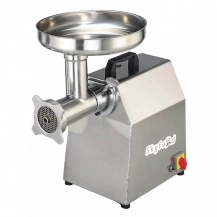
Meat grinders are the stars of the butcher shop equipment. They can grind hundreds of pounds per hour and are thus indispensable to butcher shops. They are multi-functional in that being able to grind meat rather quickly can create a lot of possibilities for your business. You can start making sausage and such in your establishment, offer grinding services to customers who wish to get their beef prepared for them, and save a lot of time and energy. Grinding manually, while still valid, is an outdated option, and for the best and most standardized results, you should use a commercial meat grinder.
2. Meat Slicers
Meat slicers are the butcher shop equipment that helps you achieve repeatable standards in your slice sizes and save you the trouble of dedicating time to slicing up your meat. This butcher shop equipment certainly gives more reliable results than a regular knife and ensures the texture of the food isn’t smashed under the pressure of a mediocre knife.

Most meat slicers, whether manual or automatic, give the user the option of adjusting the thickness of a slice. You can get super-thin pieces, which is desirable on customers’ part since it is not something they can do at home, or you can adjust the thickness to get slices up to an inch. Plus, these machines are not only used for slicing meat; you can use them for cheese or onions.
If you clean meat slicers regularly and those used for uncooked meat aren’t used for cooked foods (to prevent contamination), these machines will be your best friends. However, you should keep in mind that these machines are not suitable for cutting bones, and trying to do so will eventually harm the blades of the meat slicer. You could invest in other butcher shop equipment to remove the bones but not cut them in the slicer!!!
3. Hamburger Presses
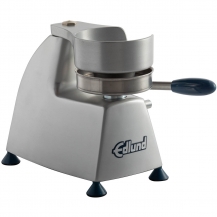
Many other establishments can use some butcher shop equipment alongside butcher shops, and hamburger presses are one of them. If you are fond of burgers, you might even get one for your house! These machines ensure you get consistent portions of burgers and help you avoid waste. If you hope to sell pressed meat for burgers, getting a hamburger presser will be very useful for your business.
While other butcher shop equipment can help you press meat somehow, investing in hamburger presses will ensure a clear idea of how many burgers you can produce from the amount of meat you have and approximately in how much time. This is quite important in terms of planning and energy saving. Plus, these butcher equipment are designed for ease of use and thus possess an ergonomic design. Both your workers and customers will be delighted with these presses.
4. Chicken Slicers
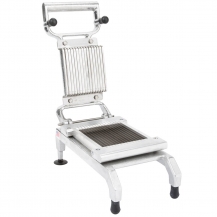
It’s safe to say that chickens are expected to be sliced in many different ways according to the dish they will be used in. Whether a salad or a sandwich, your customers search for beautiful, consistent pieces. As functional butcher shop equipment, chicken slicers will significantly ease the preparation process.
While these machines are considered mainly butcher shop equipment, many commercial kitchens, such as fast-food chains and restaurants, can benefit from these products too. Since they are designed to cut large pieces of meat in one step, they are suitable for inexperienced staff. You’ll be preventing many injuries by investing in a slicer. Yet, you should remember that, like meat slicers, chicken slicers cannot be used for cutting bones. Ensure the one who will operate the machine is aware of this to avoid any accidents.
5. Meat Saws
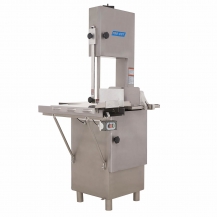
Meat saws are some of the most valuable machines among butcher shop equipment. Their primary function is to chop down large pieces of meat into manageable chunks. They are designed to be very strong and resilient; thus, they can saw thick muscles and bones, making them absolutely indispensable, for it is impossible to cut through some muscles and bones with basic knives.
You must invest in a decent meat saw and pay special attention to its maintenance to ensure everything runs smoothly in your butcher shop. The strong models are referred to as band saws, and they are fairly easy to operate thanks to their design despite dealing with tough products. These butcher shop equipment are simply your only fast option for getting through the bone and achieving clean results.
6. Meat Smokers
Smoking meat is a method that has stood the test of time, and many businesses can benefit from a meat smoker. Smokers offer you a lot of options regarding capacity and flavor. You can get a machine befitting the size of your business, and for flavor, you get to choose how to fuel the smoke. You could use wood, charcoal, electricity, and other methods to create smoke and slow-cook your meat. Your choice will undoubtedly affect how the end product tastes, so beware of making a conscious choice.

7. Meat Stuffers
Stuffers hold the casings and offer assistance in stuffing the meat and spices to get sausages. While some models come attached to the meat grinder, you can get a stand-alone meat stuffer. The choice of butcher shop equipment is up to you; you can decide based on how many sausages you hope to produce in your business.
8. Meat Tumblers
A meat tumbler is butcher shop equipment designed to bring meat into a smoother state. These machines grew popular among butchers and customers for many reasons. Their rotating drum-like design allows them to achieve this goal and produce smooth textured meat. Vacuum tumblers, specifically, marinade moisture into the meat and remove the air. The marination process helps the distribution of salt and nutrients across the piece of meat and enhances its taste. Most customers prefer tumbled meat for its smooth texture, even salt levels, or simply because it has a more consistent look.
9. Meat Butcher Knives
Butcher knives are sharpers and more resilient than regular commercial kitchen knives. You must ensure you get the best of this butcher shop equipment since knives are the most natural part of butchery, and you cannot risk working with ordinary knives. A good knife should let you work with different kinds of meats and not tire you too much in cutting.

10. Scales
You’ll need a scale to weigh the meat before packaging it or selling it to the customers. While it is perfectly fine to go with a classic model, a touchscreen scale can prove very convenient for your workers in terms of efficiency and time-saving.
11. Packaging Machines
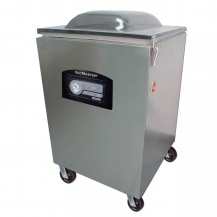
Packaging for food safety and ease of production and retail is vital for butcher shops and other food businesses. It is possible to find different types of wrappers depending on your needs. You could invest in a model that uses vacuum packaging technology to seal the meat or get an automatic model for extra features. Automatic or semi-automatic models provide step-by-step operation guides for the operator. These butcher shop equipment offers high-quality wrapping rather quickly and can be considered the main efficiency heroes among meat shop tools and equipment. Some models wrap up to 25 packages per minute. They also ensure no leaks in the packaging through heat bars and such.
12. Protective Clothing
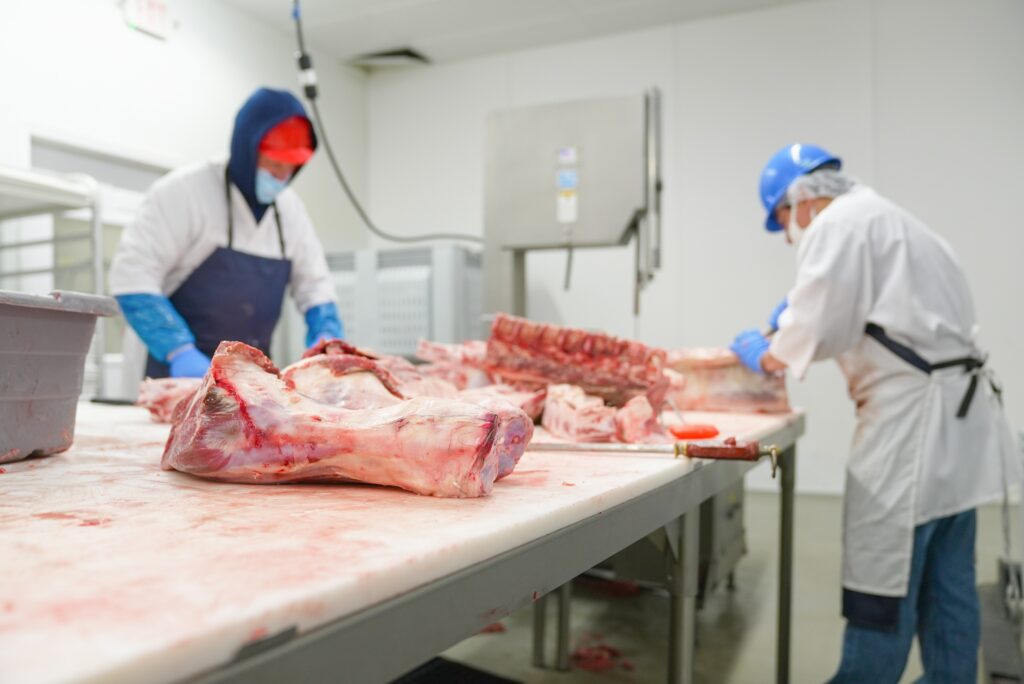
Butchery is a bloody and dangerous job. You and your staff should be safe from any hazards that might arise from the nature of this job, and the meat should be safe from any germs you might bring with you into the kitchen. While working with meat, you risk getting contaminated by blood or simply cutting yourself with a knife. Ensure everyone close to the products or the machines has protective clothing. Hairnets, clean aprons and gloves, and appropriate footwear are the most important details you should pay attention to.
13. Walk-in Refrigerators and Freezers
Walk-in refrigerators and freezers are used to store the meat, and their duties are of the utmost importance, for if the meat isn’t safe from spoilage, there is no point in planning further ahead. While shopping for commercial refrigerators and freezers, you should especially pay attention to their insulations and appropriateness for your shop or kitchen. You can also check out our article on these machines to find out what kind of model is the best for you (https://www.chefsdeal.com/blog/walk-in-refrigeration-units .)
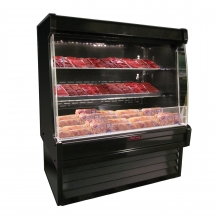
14. Open Display Merchandiser
These display merchandisers might not precisely classify as butcher shop equipment since they aren’t exclusively used in meat shops. However, they are essential for storing and displaying meat in meat stores, markets, and other places. They play a pivotal role in preserving the food and making them accessible to the shoppers. The open display merchandiser you get for your business should be of top-notch quality, considering it’ll be the home of your products till they’re sold.
15. Curved Glass Display Cases
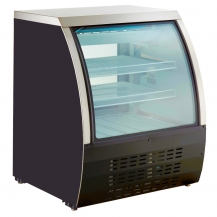
Like the open display merchandiser, curved glass meat display cases showcase the products. They are usually placed next to counters to reach in easily and put or take effects from the display case. These cases are, of course, refrigerated to ensure your meat is safe from spoilage until it’s sold.
Conclusion For Butcher Shop Equipment
Meat is a rather complicated type of food that requires special care. Butcher shop supplies are tailored to meet the demanding nature of this job, and getting the right meat shop tools and equipment can make or break your business. The butcher shop equipment list we put together will help you lay a strong foundation for your meat store and ensure you got everything you need to deal with meat in the healthiest and safest possible way. Whether you are opening your butcher shop or creating a meat market section in your superstore, you will have no trouble if you check off the butcher shop equipment on this list based on the needs of your establishment.

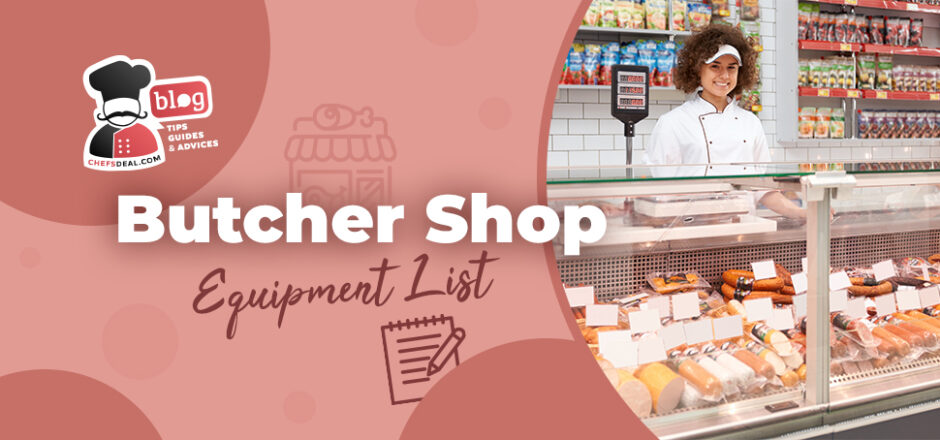




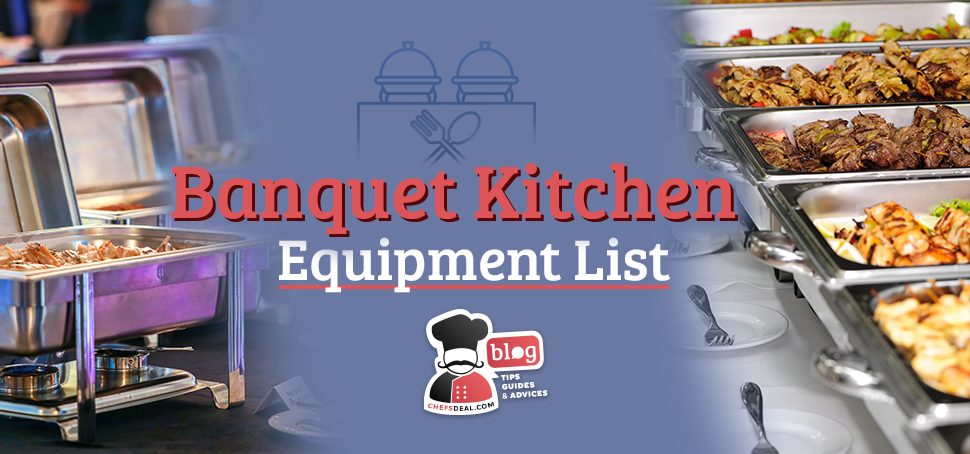
7 comments On Ultimate Butcher Shop Equipment List
I am looking for a complete butcry equipment
Hi Mod,
Thanks for your message. I forwarded it to our sale team and they’ll contact you soon.
Pingback: What Is A Meat Mincer? Meat Mincer Types and Features ()
I want to no the price of counting machine for buchary
Hello Ibrahim,
Please call us +1 (877) 254-5449 for detailed informaton.
I like it ; it is perpect and i come back.
Pingback: Meat Display Coolers - 9 Quick Tips To Get More Benefits From Them - Chef's Deal ()